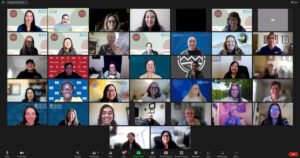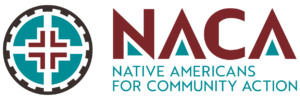
Desert Gardens
Food sovereignty is part of the foundation for healthy communities; and fresh, healthy, indigenous foods and gardens transcend all 4 strategies promoted by Good Health and Wellness in Indian Country (GHWIC). Obesity, diabetes, and heart disease prevention are clearly impacted by the availability of healthy foods, and sacred tobacco needs a place to grow.
Aaron Williams, Tobacco Program Coordinator at Southern Plains Tribal Health Board, shared his successes with Community Gardens. Aaron said his favorite thing about being part of GHWIC is the opportunities it provides to smaller communities – funding projects that may have never got off (or under) the ground without its support. Aaron explained:
“One of our grantees has been able to do raise bed gardens in their various communities and incorporate the different generations. They’ll have the gardens for the elders and then they’ll tie it with some of the youth groups and they’ll get to work together. And currently they have one garden area that has a raised garden for each program. So it’s kind of like a competition between who can have the best garden. So that’s one of my favorite things – seeing how creative the different program coordinators can get with what they want to do to promote health and create healthier lifestyles with the funding.”
Aaron Williams
One example of this is the return to traditional Osage foods through the Grow Gather Hunt program through the Osage Nation GHWIC program. The goal of teaching people better nutrition through growing, gathering and hunting for food for the family is a part of the traditions of the Osage. Growing, gathering and hunting for food were the common methods to provide nutrition in days past.
GROW is the first phase of the program which includes a gardening class taught by OSU Extension Master Gardeners in each of the three villages as well as one for the Elders in Senior Housing. Participants will learn skills to have a successful garden, benefiting sovereign food systems.
GATHER is the second phase of the program. The Osage Nation provides classes on identification of both edible and medicinal plants. Participants will learn how to make their own topical salve using plants they identify and gather.
HUNT is the third phase of the program. Public Health Nursing, Community Health Representative, Cultural Center, Prevention, Diabetes, Environmental Resources, and Fitness Center along with other guest speakers, will be conduct a 3-day daytime camp for youth. This camp teaches the youth cultural ways that their ancestors hunted. They learn to make fish spears, use a fish basket, fish with a pole, make snares and gain archery skills. Along with these skills, they learn how to stay healthy by physical activity, growing traditional foods, diabetes prevention, safety in the outdoors, and avoiding commercial tobacco.
“I’m proud to be a member of GHWIC because it is giving me an opportunity to help others and to see changes in the various communities that it provides funding for. It has provided me personally and a way to give back and it provided me a way to look at our tribal communities in a different way and see how even though we have all these health disparities that we’re still all in this together. One of my main things, the idea I like to promote is answering the question of “How does a guru order his hot dog?” – “One with everything.” Because we’re all connected, you can’t push on one area and not pull on another. And GHWIC really does show that by adding more energy and bringing people together. It helps us create better health outcomes throughout a lot of different communities through different partnerships and it allows people to be more connected.”
Aaron Williams
We look forward to seeing this and projects like Aaron’s grow and lead to a more independent future for American Indian and Alaska Native communities.
Learn more:
- https://www.osagenation-nsn.gov/news-events/news/osage-nation-elder-gardens-2020
- https://www.osagenation-nsn.gov/news-events/news/grow-gather-hunt
- https://www.osagenation-nsn.gov/news-events/news/working-together




